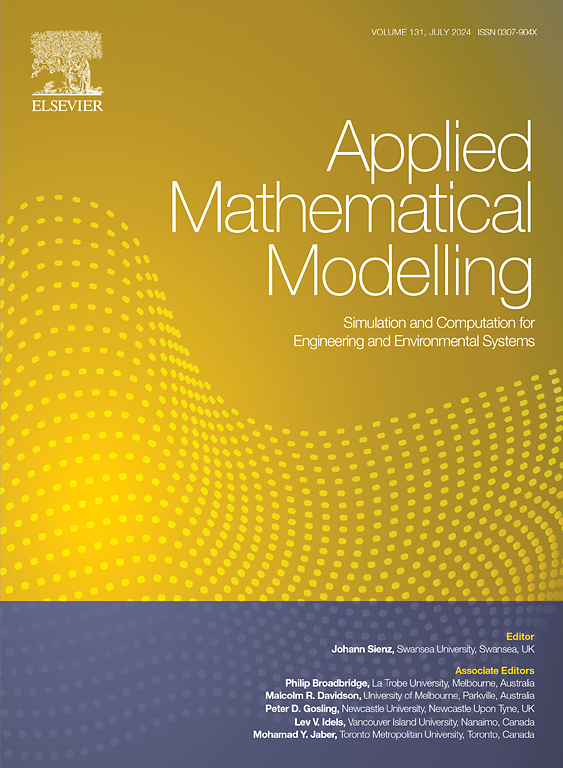Adaptive neural network control of manipulators with input deadband and field-of-view constraints
IF 4.4
2区 工程技术
Q1 ENGINEERING, MULTIDISCIPLINARY
引用次数: 0
Abstract
There exist input dead zone and field-of-view constraints in visual dynamic manipulator systems due to image information loss and uncertainty in actuator physical characteristics, which lead to reduced control accuracy, boundary-induced oscillations, motion instability, and high control energy consumption. In this study, a novel zone Barrier Lyapunov Functions based adaptive neural network visual controller is proposed to address these problems. First, the system model is transformed into an image-based second-order dynamic model, and for the unknown unmeasurable states in the model, a high-gain observer is utilized to achieve accurate estimation. Second, to improve the flexibility of the image trajectory and velocity in the constraint area, a new zone Barrier Lyapunov Functions function is introduced to the visual servoing controller. Additionally, an adaptive neural network approximates the input dead zone model and the unknown part of the system dynamics. Then, the stability of the system and the boundedness of all error signals are theoretically proven using the Lyapunov technique to ensure that the field-of-view constraints are not violated. Finally, comparative simulation and experimental results verify the effectiveness and superiority of the proposed method. The results show that our method can keep the image feature point error around 5 pixels without violating the constraints, and the overall energy consumption of the system is reduced by 83.58% compared to the BLF method and 31.58% compared to the tangent barrier Lyapunov function method, which has significant potential applications in manipulator vision systems.
具有输入死带和视场约束的机械臂自适应神经网络控制
视觉动态机械臂系统由于图像信息的丢失和作动器物理特性的不确定性,存在输入死区和视场约束,导致控制精度降低、边界振荡、运动不稳定和控制能耗高。为了解决这些问题,本文提出了一种基于区域屏障李雅普诺夫函数的自适应神经网络视觉控制器。首先,将系统模型转化为基于图像的二阶动态模型,针对模型中未知的不可测状态,利用高增益观测器实现精确估计;其次,为了提高约束区域内图像轨迹和速度的灵活性,在视觉伺服控制器中引入了新的区域Barrier Lyapunov函数;此外,自适应神经网络逼近输入死区模型和系统动力学的未知部分。然后,利用李雅普诺夫技术从理论上证明了系统的稳定性和所有误差信号的有界性,以确保不违反视场约束。最后,对比仿真和实验结果验证了所提方法的有效性和优越性。结果表明,该方法在不违反约束条件的情况下,可以将图像特征点误差保持在5个像素左右,系统总体能耗比BLF方法降低83.58%,比切势障Lyapunov函数方法降低31.58%,在机械臂视觉系统中具有重要的应用潜力。
本文章由计算机程序翻译,如有差异,请以英文原文为准。
求助全文
约1分钟内获得全文
求助全文
来源期刊

Applied Mathematical Modelling
数学-工程:综合
CiteScore
9.80
自引率
8.00%
发文量
508
审稿时长
43 days
期刊介绍:
Applied Mathematical Modelling focuses on research related to the mathematical modelling of engineering and environmental processes, manufacturing, and industrial systems. A significant emerging area of research activity involves multiphysics processes, and contributions in this area are particularly encouraged.
This influential publication covers a wide spectrum of subjects including heat transfer, fluid mechanics, CFD, and transport phenomena; solid mechanics and mechanics of metals; electromagnets and MHD; reliability modelling and system optimization; finite volume, finite element, and boundary element procedures; modelling of inventory, industrial, manufacturing and logistics systems for viable decision making; civil engineering systems and structures; mineral and energy resources; relevant software engineering issues associated with CAD and CAE; and materials and metallurgical engineering.
Applied Mathematical Modelling is primarily interested in papers developing increased insights into real-world problems through novel mathematical modelling, novel applications or a combination of these. Papers employing existing numerical techniques must demonstrate sufficient novelty in the solution of practical problems. Papers on fuzzy logic in decision-making or purely financial mathematics are normally not considered. Research on fractional differential equations, bifurcation, and numerical methods needs to include practical examples. Population dynamics must solve realistic scenarios. Papers in the area of logistics and business modelling should demonstrate meaningful managerial insight. Submissions with no real-world application will not be considered.
 求助内容:
求助内容: 应助结果提醒方式:
应助结果提醒方式:


